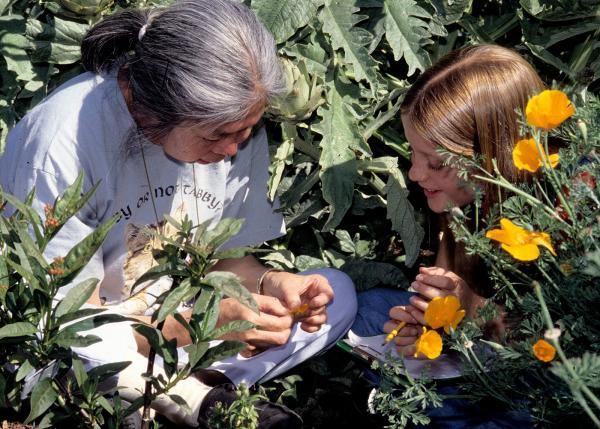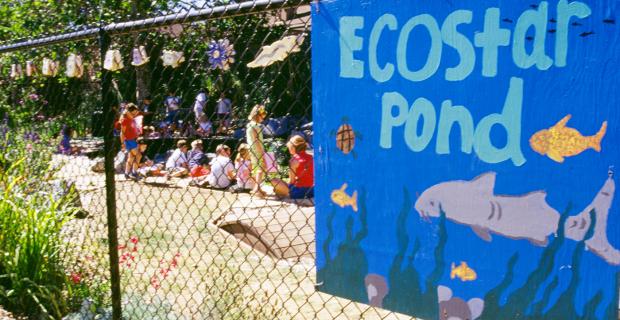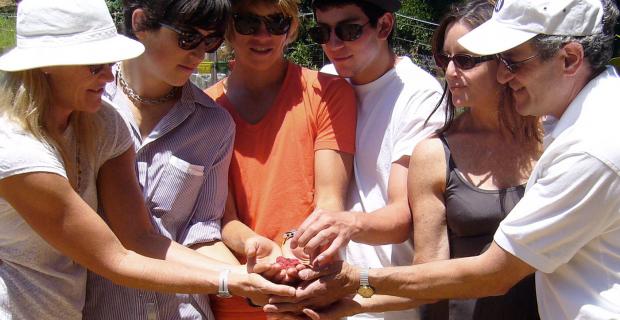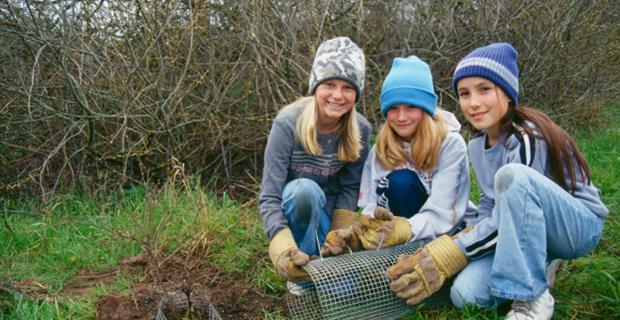The One Ingredient to Turn a Good School Into a Great School

What's one ingredient for turning a good school into a great school?
Some answers might include "strong leadership," "inspired teachers," "state-of-the-art curriculum," or "parent involvement." But at Park School in Mill Valley, California, perhaps the most important ingredient has been a strong school community — parents, teachers, students, administrators, and neighbors — working together toward a common vision.
"We've worked hard to make it a fabulous environment for everyone." says Park School principal Ruthanne Bexton. "We're all clear that we're really in this together."
"[Our] mantra is 'What's in the best interest of children?'" says Bexton. When everyone trusts that it is children who are the most important, then "it is easy to trust people who are growing and caring and have a vision."
At Park School, parents and teachers work closely together to make decisions about the school in an atmosphere of trust that is truly remarkable. Staff meetings sometimes operate with parents and no principal, and parent leaders are invited to staff retreats to help plan the following year. "It's very healthy and it works well for children," points out Bexton.
Things haven't always run so smoothly at Park. When Bexton arrived five years ago as the school's new principal, she found that teachers cared deeply about the children and that parents were very involved, but everyone was doing their own thing and there was no real sense of trust. She started having individual conversations with people about what they wanted most for the children. These led to group discussions with parents and staff about their ideas for the school. Every discussion came back to the question, "What's in the best interest of children?"
At that time, the playground was covered in asphalt, which no one liked. After a lengthy debate about what to do, parents and teachers decided that they couldn't jackhammer all the asphalt, but they could create a garden that was both a learning environment for children and a respite for everyone in the community.
"We all agreed — the entire community — that a garden was in the best interest of kids," explains Bexton. "It was the first thing that everyone could vision together." With no money and no expertise, the entire school community worked toward this shared vision. Businesses supported the project through donations of tools and soil and community members came to shovel gravel and soil. "We just discovered that if your vision is strong enough, people will come."
Park applied for and received a grant from the Center for Ecoliteracy. These funds were used to support garden coordination, release time for teachers to work in teams to plan and implement curriculum, staff retreats for visioning and planning, staff development, and mini-grants to fund new classroom or grade-level projects. Participation in Center-sponsored workshops helped broaden our knowledge base and gave us intellectual support for our philosophy. The Center also invited us to participate in a network of meetings where we could share and brainstorm with other education professionals, thereby enabling us to learn from others. Our garden program became a more comprehensive environmental education program because of our involvement with the Center."
In its creation, the garden also became a vehicle for uniting the school community. Parents and staff who had wrestled over it at the start, found that their shared vision of a beautiful, natural learning space brought them all together in the end.
Now the garden is such an important part of the school it is hard to imagine the school without it. It is a focus for many school activities, an integrating current that provides a context for a variety of learning experiences and projects. "I've always believed that learning is meaningful to children if it applies to their lives. If they relate it to things that are important to them, they retain it," says Bexton. "When children do things like garden, raise food, [or] nurture butterflies, it is meaningful learning. The children write in the garden, do math in the garden, and sometimes just go out there when they are having a terrible time. They feel connected to it."
The teaching staff also uses the garden to help teach students the importance of responsibility. Students have given the food they've grown to a local church that feeds people in need. They belong to garden clubs in which students can decide how to participate in the garden. Some even choose to weed. As students begin to see how they can influence things in and through the garden, their sense of responsibility is extended to other areas. For example, they worked to amp up the school's recycling program when they saw how their actions could affect the world.
Becoming stewards of the creek across the street from the school is another project that grew out of the success of the garden and the cooperative nature of the school community. Located in Doyle Park, the creek needs lots of care because of its access to the general public.
Focusing on the creek, Park became a Leadership School with the STRAW Project — Students and Teachers Restoring a Watershed — which was at that time jointly administered by the Center for Ecoliteracy and The Bay Institute. The STRAW Project hooks up teachers and students like those at Park with community members and restoration specialists to plan and carry out watershed projects. STRAW provides Park and other schools with resources for conducting hands-on watershed studies and creek restoration projects.
At Park, the STRAW Project has become an integral part of students' learning. Classes started cleaning up the creek and planting native plants along the creek bed, working with a naturalist to find the best way to restore the creek.
These young children — 1st — 2nd — and 3rd graders — discovered that a construction company was dumping in the creek. They were so upset by this that they worked to shut down the construction project, going to the city and writing to the newspaper. In the end, the company had to clean up its mess. "It was the children's doing, with guidance," says Bexton. "The kids are really committed to [that creek]. It's their environment, and I think that it's teaching that they can control something and they can make a difference."
Park School was named a California Distinguished School for 2002, an honor bestowed by the State Department of Education to hold up exemplary public schools. Park students' sense of responsibility for nature and the school's close ties with the community are two of the features that make Park stand out.
Bexton believes that cooperation among the school community is Park's greatest asset. "Systemic change really takes so much processing, it's very time consuming. You have to be willing to go through the pain and experience the joy afterwards. It takes a lot of extra effort," she says. "Always from the beginning, whether it was the garden, recycling or STRAW, we've always discussed things as a total group first. The discussion is always, 'Okay, what can everyone do? What's important?'" And, of course, "What's in the best interest of children?"




